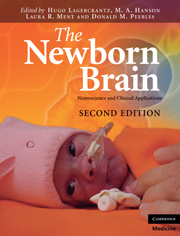Book contents
- Frontmatter
- Contents
- List of contributors
- Preface to the First Edition
- Preface to the Second Edition
- 1 Reflections on the origins of the human brain
- Section 1 Making of the brain
- Section 2 Sensory systems and behavior
- Section 3 Radiological and neurophysiological investigations
- Section 4 Clinical aspects
- Section 5 Follow-up
- Section 6 Consciousness
- 23 On the emergence of consciousness
- Index
- Plate section
- References
23 - On the emergence of consciousness
from Section 6 - Consciousness
Published online by Cambridge University Press: 01 March 2011
- Frontmatter
- Contents
- List of contributors
- Preface to the First Edition
- Preface to the Second Edition
- 1 Reflections on the origins of the human brain
- Section 1 Making of the brain
- Section 2 Sensory systems and behavior
- Section 3 Radiological and neurophysiological investigations
- Section 4 Clinical aspects
- Section 5 Follow-up
- Section 6 Consciousness
- 23 On the emergence of consciousness
- Index
- Plate section
- References
Summary
Introduction
One of the most important challenges of this century is to understand the neural bases of consciousness from the molecular to the highest cognitive level, in other words, to bridge “the hump from neurochemistry to subjective feeling” (Searle, 2000). Yet, due to the complexity of the human brain, it is not anticipated that a single concept, method, or experimental finding will ever give the decisive answer. On the other hand, studying the brain from early fetal stages in utero up to the adult state may offer fruitful insights to understand human consciousness. The approach is in itself rather new. It is, indeed, quite surprising to note that William James regarded the infant as unaware of its body, of itself (the I) and of the outside world, i.e., “the blooming buzzing confusion.” Sigmund Freud also claimed that children up to 5 years of age are rarely aware of the motives and reasons for their behavior and that the bulk of their mental life is unconscious. Lev Vygotsky was the first psychologist in modern time who thought that a baby's view of the world was nearly as complex and highly structured as the adult one (see Gopnik et al., 1999; Zelazo, 2004). Also, at variance with the commonly accepted view that consciousness corresponds to a unique and irreducible system, developmental data argue for a progressive, stepwise, growth of the diverse components of adult consciousness (Zelazo, 2004).
- Type
- Chapter
- Information
- The Newborn BrainNeuroscience and Clinical Applications, pp. 377 - 394Publisher: Cambridge University PressPrint publication year: 2010
References
- 1
- Cited by

